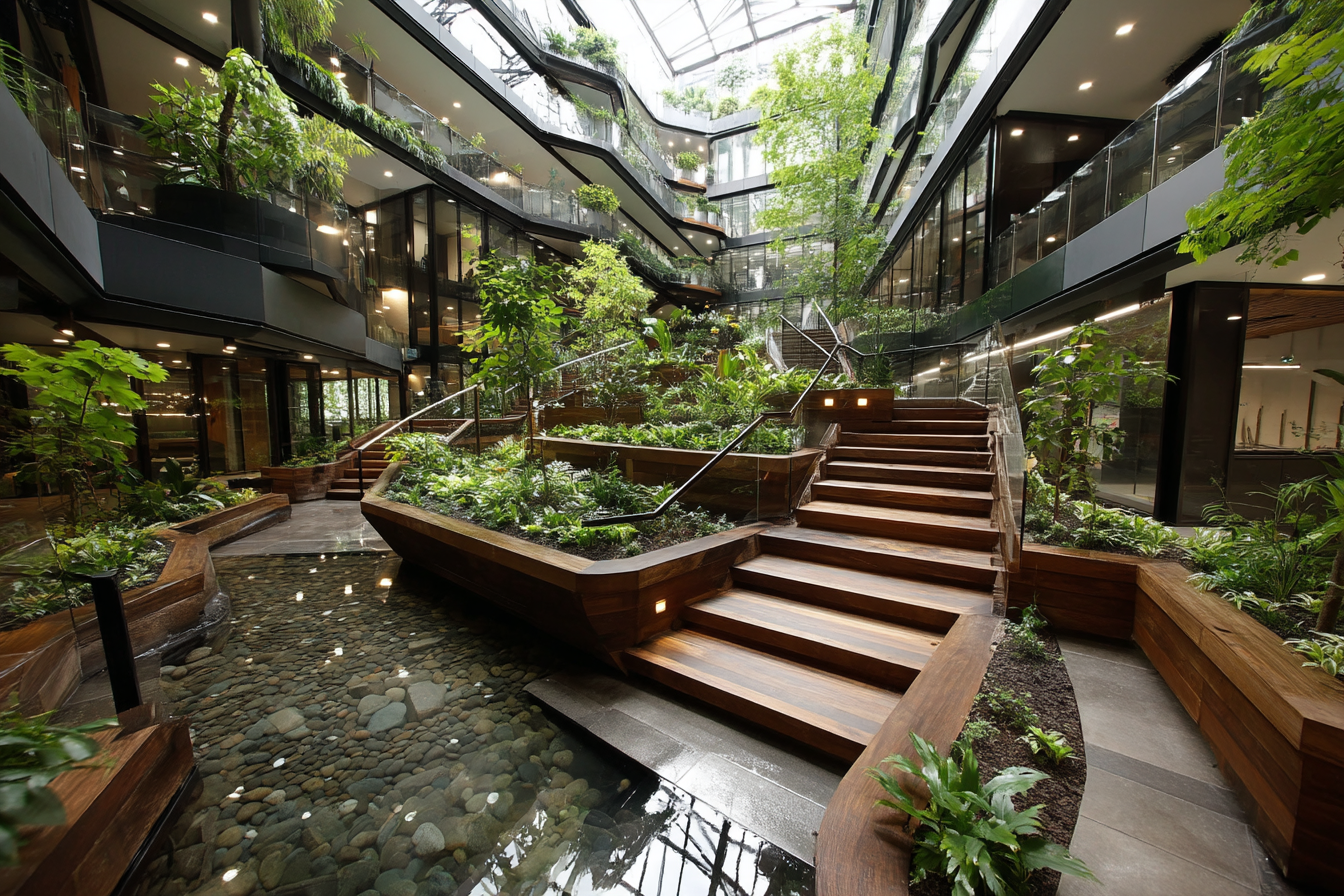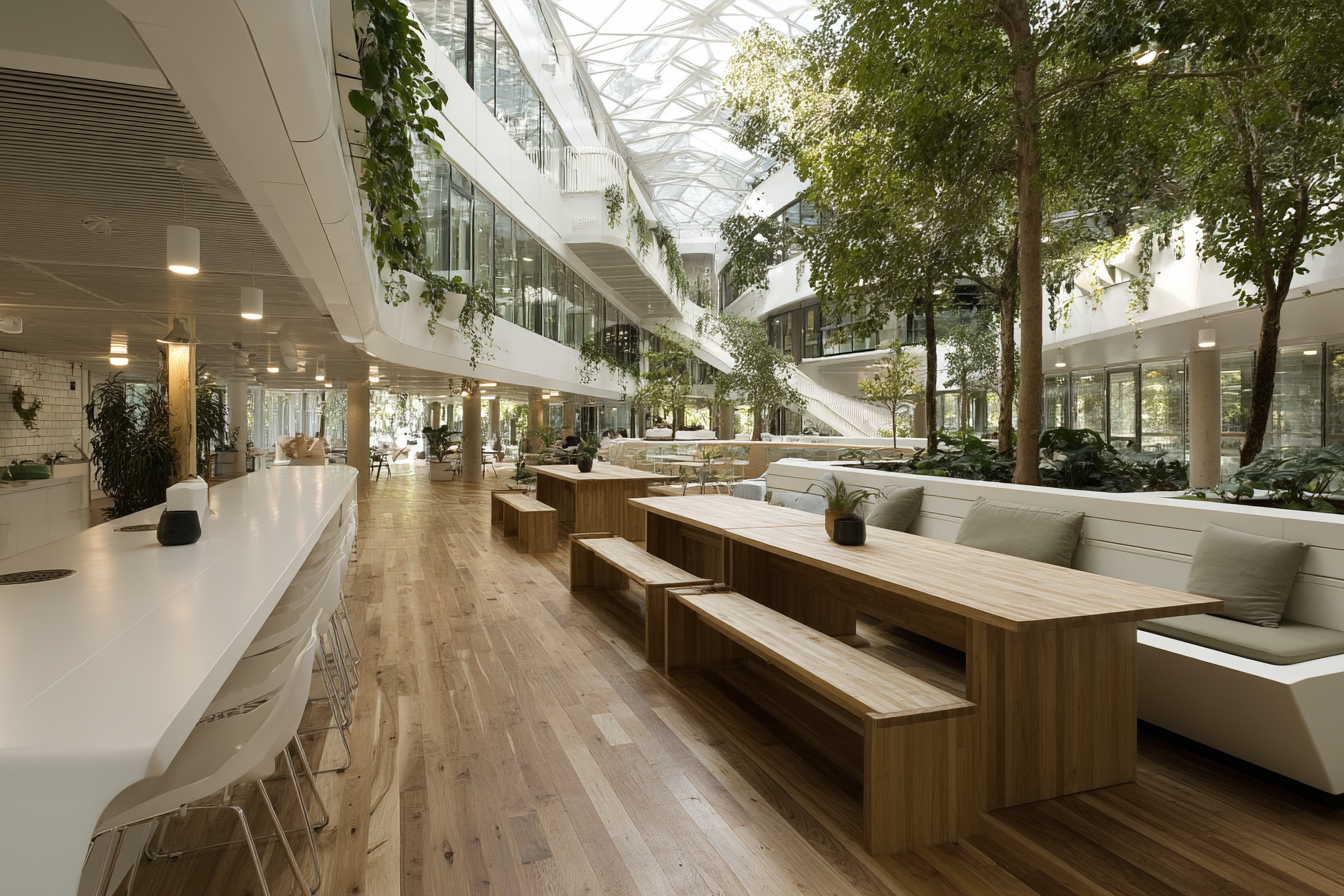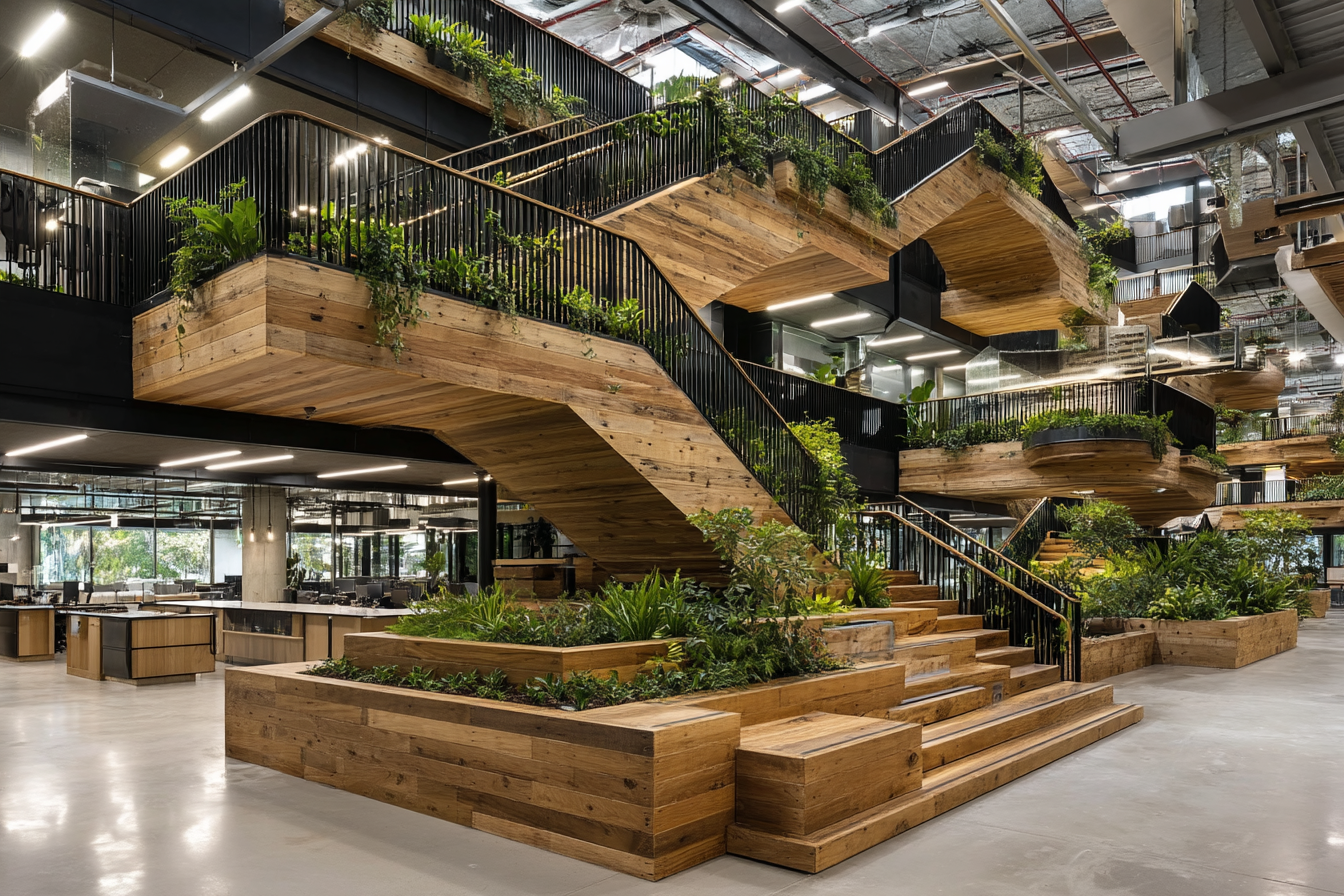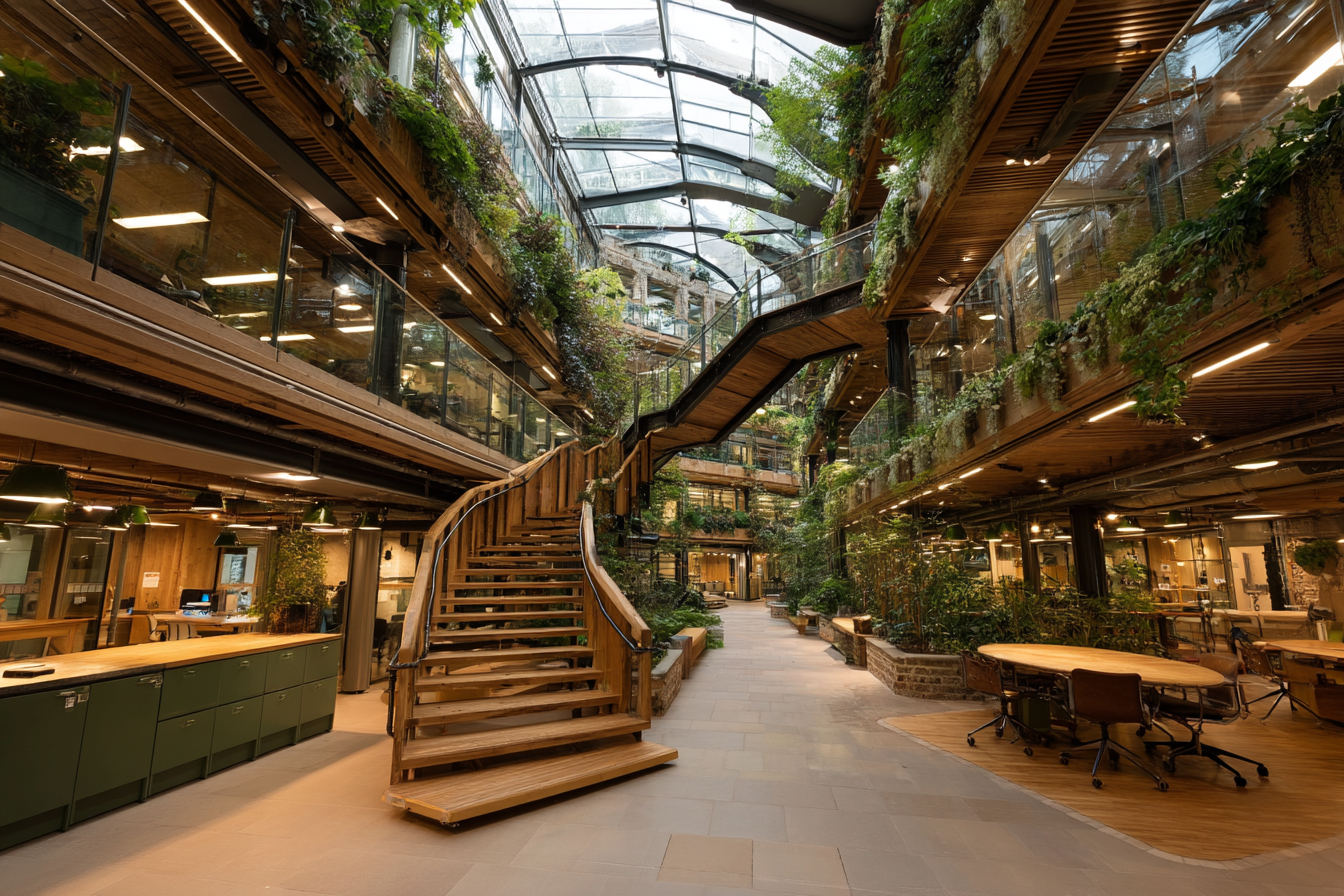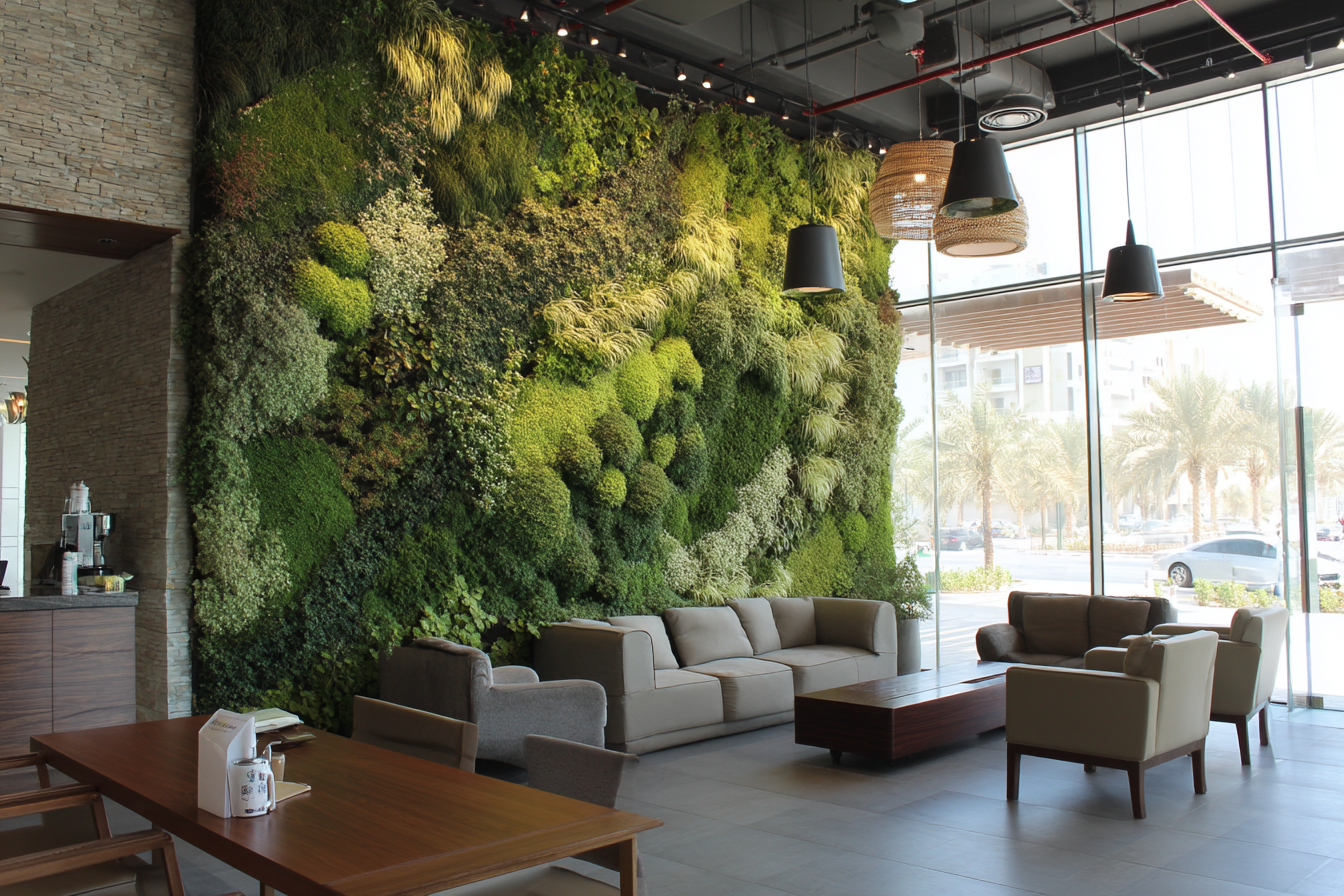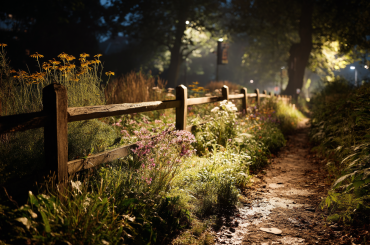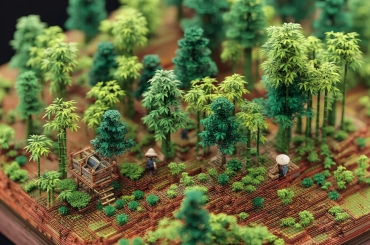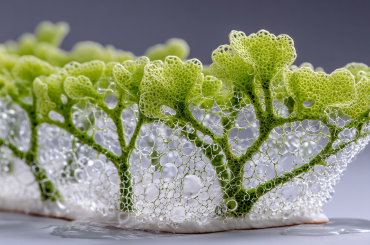My obsession with bringing the outdoors in started when I was nine and convinced my parents to let me turn our bathroom into what I called a “jungle paradise.” This involved approximately seventeen potted plants crammed onto every available surface, a cassette player with rainforest sounds that drove my father absolutely mad, and some questionable wall art featuring parrots that I’d cut out from my uncle’s discarded National Geographic magazines. The humidity from the shower actually made it a decent environment for the plants, which thrived while the bathroom paint peeled and the wallpaper gradually surrendered to mold. My poor mother tolerated this botanical takeover for almost a year before putting her foot down after discovering mushrooms (actual mushrooms!) growing behind the toilet.
Looking back, while my execution was somewhat lacking, my instincts weren’t wrong. I’d accidentally stumbled upon what designers now call biophilic design—the practice of meaningfully connecting indoor spaces with nature. Turns out my nine-year-old self was onto something when I insisted I could “breathe better” in my jungle bathroom and that brushing my teeth was “more exciting with birds watching.” Though I suspect the latter had more to do with my uncle’s exotic parrot cutouts than any legitimate design principle.
The term “biophilia” was popularized by biologist E.O. Wilson to describe humans’ innate tendency to seek connections with nature. It’s not just some hippie notion or aesthetic preference—our bodies and brains evolved in natural environments over millennia, and they respond to natural elements in measurable, physiological ways. The concept might seem obvious when stated plainly—humans feel better around nature—but we’ve spent the last century designing built environments that actively separate us from the natural world, with predictably dismal results for both our wellbeing and the planet.
My first adult encounter with intentional biophilic design came during a visit to a newly constructed office building in Manchester where I was interviewing the sustainability director for an article. The building featured an atrium filled with towering live trees, walls partially covered in moss, abundant natural light from strategically placed skylights, and natural ventilation systems that eliminated the need for constant mechanical air conditioning. Meeting rooms were named after local ecosystems rather than numbered, and the carpet patterns subtly mimicked the flow patterns of the nearby river.
Walking through that space felt markedly different from typical office buildings. My interview notes from that day include the scribbled observation: “Don’t want to leave. Could actually work here without wanting to scream.” High praise indeed from someone who typically finds corporate environments soul-crushing. When I asked the facilities manager if the natural elements were purely aesthetic choices, he looked almost offended.
“We’ve seen a 27% reduction in sick days since moving from our old headquarters,” he told me. “Productivity metrics are up, and our staff retention has improved dramatically. These aren’t design indulgences—they’re strategic investments that pay measurable returns.”
The science backs this up. Research consistently shows that spaces incorporating natural elements—whether actual nature like plants and water features or simply natural patterns, materials, and light—improve everything from cognitive function and creativity to stress recovery and general wellbeing. One study I covered for Zero Emission Living found that hospital patients with views of nature recovered faster and needed less pain medication than those facing brick walls. Another showed office workers in biophilic environments reported 15% higher wellbeing and were 15% more creative than their counterparts in standard offices.
But biophilic design isn’t just about stuffing buildings full of potted plants (though that’s certainly a start, and one I heartily endorse based on the current state of my flat, which my friend Ruth describes as “part apartment, part conservatory, part experiment in how many plants one human can water before having a breakdown”). True biophilic design operates on multiple levels, from the obvious inclusion of living things to more subtle elements like natural materials, patterns that mimic natural forms, and spaces that change with time and seasons.
After that Manchester office visit, I became slightly obsessed with the concept. I convinced my editor to let me write a series on biophilic design in different contexts—workplaces, homes, schools, healthcare facilities—which gave me the perfect excuse to visit some of the most innovative buildings incorporating these principles. I’ve walked through hospitals with healing gardens where patients can literally ground themselves by touching soil. I’ve visited schools where classroom walls open to vegetable gardens used in science lessons. I’ve toured homes built around central courtyards that serve as microclimates, regulating temperature and bringing nature into the heart of domestic life.
What struck me across all these spaces wasn’t just their beauty, though they were undeniably beautiful. It was how they functioned better—for people and for the planet. Many biophilic features serve double duty as sustainability elements. Living walls and green roofs provide insulation, reduce energy needs, manage stormwater, and support biodiversity while simultaneously improving human health and happiness. Natural ventilation systems reduce energy consumption while providing changing air flow that mimics outdoor conditions. Materials like wood store carbon while creating spaces that reduce stress.
Of course, I had to try implementing these principles in my own modest Bristol flat. This has led to a series of experiments, some more successful than others. The living wall in my kitchen works brilliantly, providing herbs for cooking while helping to regulate humidity. The attempt to create a “natural soundscape” by leaving my windows open to hear birds, however, mostly resulted in my neighbors complaining about my 5AM alarm clock of exceedingly enthusiastic local magpies.
My bedroom redesign based on biophilic principles has been my most successful domestic intervention. I replaced synthetic curtains with wooden blinds that filter light in patterns reminiscent of tree canopies. I switched to bedding in natural materials with colors drawn from landscape palettes. I introduced varied textures—rough stone coasters, smooth wooden bedside tables, soft wool throws—that provide the sensory complexity found in natural environments. And yes, I added plants—though I’ve learned that devil’s ivy trailing above your head as you sleep can create somewhat disconcerting shadow patterns at 3AM that my still-evolving primate brain occasionally mistakes for snakes.
The changes were relatively small, but the impact on my sleep quality and morning mood has been remarkable. There’s something deeply comforting about waking up in a space that feels connected to the living world rather than sealed off from it. That comfort isn’t just psychological—it’s a physical response to environments that match what our bodies evolved to expect.
Workplaces are perhaps where biophilic design can have the most immediate impact, given how many hours we spend in them and how spectacularly awful many office environments are from a natural perspective. When Zero Emission Living relocated to new offices last year, I campaigned relentlessly for biophilic elements to be incorporated. This primarily involved sending our facilities manager approximately 47 research papers on productivity benefits and cornering our finance director at the holiday party with calculations showing the return on investment for various interventions.
My persistence paid off. Our new office features designated quiet areas with views of a small courtyard garden, meeting spaces divided by plant walls rather than solid partitions, and a hot desk area near large windows where natural light falls across desks made from local, sustainably harvested ash. Is it perfect? No. Did we have budget constraints that prevented the indoor waterfall and treehouse meeting room of my dreams? Absolutely. But the space works in ways our old office never did, with different areas supporting different types of work while maintaining connections to natural elements throughout.
The most encouraging development I’ve seen is the democratization of biophilic design. What was once reserved for high-end corporate headquarters or luxury homes is increasingly recognized as a basic human need that should inform all built environments. Community centers, affordable housing developments, and public spaces are being designed or retrofitted with biophilic principles, often with remarkable ingenuity despite limited budgets.
I visited a primary school in a fairly deprived area of Liverpool where teachers had transformed their concrete playground using principles of biophilic design on a shoestring budget. They’d created a sensory garden with plants in repurposed containers, built simple wooden structures that collected rainwater to feed the garden, and painted murals featuring local wildlife. The head teacher told me that behavioral incidents during break times had dropped by nearly 40% since the transformation.
“Children who struggled to concentrate or regulate their emotions indoors often find their balance outside,” she explained as we watched a group of seven-year-olds intently examining a planter full of wildflowers that had attracted several bees. “But we can’t always be outdoors, especially in our climate. By bringing elements of nature into our indoor spaces and creating a stronger connection between inside and outside, we’ve seen benefits throughout the school day.”
For those looking to incorporate biophilic elements into their own spaces without major renovations or expenses, I generally recommend a tiered approach:
Start with the basics: Maximize natural light by keeping windows clean and unobstructed, and position key activities where the light is best. Add plants—even a few can make a significant difference, particularly in spaces where you spend the most time. Choose natural materials and textures when replacing or adding furnishings.
Look for patterns and connections: Consider how you move through your space and whether that movement feels natural or constrained. Incorporate natural patterns in textiles, art, or even the arrangement of objects. Create sight lines to outdoor spaces where possible.
Think about all senses: Biophilic design isn’t just visual. Natural sounds (a small fountain, wind chimes), textures that invite touch, and even scents (natural essential oils, flowers, herbs) can strengthen connections to nature.
Consider natural processes: Spaces that acknowledge change—seasonal decorations, areas where sunlight moves through the day, plants that visibly grow and change—satisfy our innate need to experience natural cycles and evolution.
The most powerful aspect of biophilic design may be its capacity to change our relationship with the natural world more broadly. Designing spaces that connect us to nature doesn’t just make those specific environments healthier and more pleasant—it helps rebuild our understanding of ourselves as part of nature rather than separate from it. That shift in perspective is essential if we’re to address our larger environmental challenges.
As for my childhood jungle bathroom? My mother recently confessed she actually missed it after they eventually remodeled. “The new bathroom is certainly more practical,” she said, “but it doesn’t have the same… I don’t know… life to it.” She’s recently added three small potted ferns to the window ledge. Progress, I’d say. Progress indeed.
